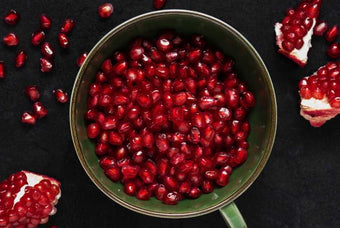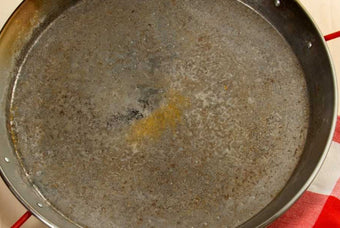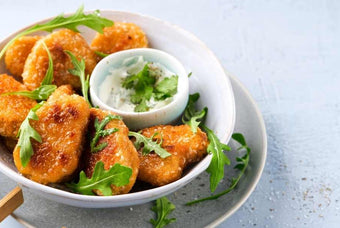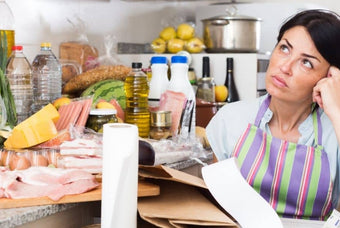If you are thinking cooking new recipes, you may have come across certain issues with getting ingredients. After all, bomba rice is sometimes not available at your local supermarket. In these cases, the question may come up “can I substitute any ingredients if I cannot find the exact recommended ingredient?” The answer to this question is yes, of course you can. At Machika, we believe you can turn a recipe into your own by substituting ingredients for more accessible options. However, you cannot substitute all the ingredients. If you did, it would no longer really be considered paella! I guess the real question is “what makes paella, paella?” Well, that is a complicated question. Many dishes can have ingredients substituted without being considered a new dish. The fundamental things that make a paella are the specific traditional ingredients and method of cooking.
Paella Recipes, a food full of tradition

In the past, traditional paella was made using meats like rabbit and chicken. Seafood paella is also extremely popular. Beyond seafood, there are vegetarian and vegan paella dishes like our delicious Machika vegan vegetarian paella recipe. So, when it comes to what we consider the main meat of your dish, you have many options. However, certain things you cannot replace or really substitute are:
- Saffron
- Rice (other types of rice can be substituted but not for a different grain altogether)
- Tomatoes
- Onions
With this in mind, there are tons of things you can add or switch out in a paella recipe. For example, while you need to use rice, it does not mean you need to use bomba rice. In fact, there are certain recipes that use short grain and long grain rice. Here are some ingredients in a paella you can switch out for others without turning it into a completely new dish:
- Types of rice
- Oil
- Pan used
- Seasoning
- Meat part of the dish
- Vegetables used
Types of Rice for Paella
The consensus is, for paella, the best rice to use are the ones that are historically present in the recipe. That means a specific type of short grain race. Types of rice is something most people do not consider when cooking. After all, it becomes more about the taste, nutrition, and texture than it does how it compliments a recipe. If you want a healthier base for your recipe, then brown rice is typically a good enough substitute. However, because we cook paella on an uncovered pan, you will need certain characteristics that are unique to a couple types of rice. For example, while you will want to avoid most long grain rice, you can use many types of short grain and medium grain rice instead. Some common rice you can replace bomba rice with include:
- Risotto rice
- Calasparra rice
- Senia rice
- Jasmine rice (long grain but usable)
- Japanese rice
Risotto Rice
Risotto rice is perfect for, as the name implies, risotto. Like paella rice, however, it is not exclusive to the specific dish. You can use risotto rice for more than cooking risotto. For example, it makes a great paella base like bomba. Risotto rice is not a reference to a single type of risotto rice either. Three of the most popular types include carnaroli, arborio, and vialone nano. All three are considered high quality rices that can replace bomba rice in a paella recipe. The goal of the rice is to be absorbent enough to suck up the liquid and oil while also cooking fast.
Other types of rice like brown rice are terrible for paella. They do not absorb water as well and take nearly twice as long to completely cook. This would leave your paella with a semi-cooked and tough rice texture. You will want a rice that can cook quickly so you avoid overcooking other ingredients.
Calasparra Rice
Another type of rice that is great in paella recipe is Calasparra rice. Like Valencia rice, Calasparra rice does not reference a specific strain of rice, but a variety grown in the area. It’s a good thing you do not need rice specifically from Valencia to make paella. There is not much to say about Calasparra rice that has not already been said about bomba rice. Both are similar rice from Spain and great for making a tasty paella like our Machika organic chicken paella recipe.
Senia Rice

Senia rice is technically a time of paella rice, but not as famous as bomba. It features a lot of the same characteristics as bomba rice. It is a short grain rice that is grown frequently in Spain making a staple rice. If you were to compare the two by placing some grains side by side, you would have a hard time telling the two apart. They look almost the same, are both grown in Spain, and both are great when cooking paella. At Machika.com, most of our recipes will recommend bomba rice. However, you can switch it out for senia rice and not have to adjust anything else in the recipe. The cook time and process will be the same as if you had used bomba rice.
Jasmine Rice
Jasmine rice is one of the most popular types of rice you around the world. Throughout the middle east, fragrant jasmine rice is the staple grain and dish. Jasmine rice goes great with many curries, meats, and vegetarian dishes. This rice is specifically chosen in many areas of Asia and the middle east for its unique fragrant scent. The scent is naturally produced and disappears after a couple months when stored. Depending on how it is stored, it may lose its fragrance, eventually. Making paella with jasmine rice is a unique experience. You end up with a slightly more fragrant product that adds to the flavor of the paella recipe.
Japanese Rice
Another fantastic type of rice to use in paella is Japanese rice. Once again, Japanese rice refers to a variety of rice that are grown specifically in Japan. Also known as sushi rice, it is well known for its use in sushi and Asian dishes. The rice is small but sticky when cooked because of the higher amount of starch. This is not an issue for paella, however. Cooked paella rice tends to become sticky as the oil and fats from the meat settle at the bottom of the pan. This is how you get that delectable socarrat that is famous in paella recipes.
Types of Oil for Paella
The type of oil for paella is not as important as the other ingredient in the recipe. After all, cooking oil is cooking oil. Any type of cooking oil can be used in paella, though extra virgin olive oil is the gold standard. It has a neutral taste that can fit many recipes without being overpowering. Other types of oil like vegetable oil may contain too strong of an oil taste. Unlike olive oil, vegetable oil and corn oil may have what some consider an unpleasant taste. After all, you are probably not going to drizzle vegetable oil onto a salad because you love the taste. These types of oils are better for frying and high temp cooking. With paella, most of the time you are cooking at medium to medium-high heat. The paella itself will spend a lot of time on a simmer as the rice absorbs the liquids.
However, any vegetable oil will do in a pinch. For example, you could even place your olive oil with liquid coconut oil. Coconut oil differs nutritionally but is nearly flavorless, meaning you do not have to worry about changing the taste of the recipe as much.
Paella Pan Substitutes
While the best choice for cooking paella is always going to be a paella pan specifically made for cooking the recipe, it is not the only choice. You can cook paella easily in a seasoned cast iron pan! However, there are some trade-offs when using cast iron. The material is typically expensive and does not come in large sizes like a paella pan. Cast iron is also much heavier and takes longer to heat up and cool down. When cooking paella on it, you must pay close attention to heat and heat distribution. You may undercook or burn your rice if you do not. You can use any regular flat frying pan also. Just make sure your pan is large enough to handle all the ingredients going into your recipe.
Seasoning
While saffron is nearly essential for paella, it is not exactly the only type of seasoning of flavor one can add to a paella. For example, if you are making a paella and want it to be spicy, you can add chili pepper infused extra virgin olive oil alongside your regular oil. Simply replace half of the oil you will use with chili pepper infused olive oil. This will add a spicy flavor without changing the aroma of the dish too much. It can even act kind of like saffron by coloring the rice a reddish color. Other seasoning you can replace with salt with a different type. Himalayan pink salt may have some health benefits, so many people prefer using it in their cooking.
Meat Parts of the Paella
Meats in paella are the main part of the dish. If you consider the rice and veggies the base, then the meat is the main protein. However, you do not need to make paella using the traditional or normal meat ingredients. For example, rather than using chorizo in your paella, try going vegetarian. Tofu with meat flavors can be bought at many supermarkets. You can also take regular tofu and cook it in spices to simulate meat. You can replace almost any meat in a paella recipe with something else without completely changing the dish. It will still be paella at the end of the day.
Vegetables Used
You can divide paella into three main parts: the rice, meat, and veggies. All in all, paella is a simple recipe that relies on the cooking method and seasoning to really shine. Unlike regular dishes where the sides and main are cooked separately, the rice, veggies, and meat are all cooked in the same pan. This allows all the fats and flavors to fuse together. Veggies are the most interchangeable part of paella. Some recipes call for a little, while others include a variety.
For example, if you do not have green peas, you can include green beans instead. They are remarkably similar in taste, texture, and even appearance. Bell peppers are also a popular vegetable to throw in paella. If you want to replace bell peppers, you can use mild heat peppers like Anaheim and Poblana peppers. While they may add a little of heat, they are mild enough that it will not be overbearing.
Find Paella Recipes and Paella Pans at Machika Today!
If you are trying to become more active in the kitchen, Machika has your back. Not only can you buy kitchen and cookware like high quality enameled paella pans, but you can also check out our blog. We provide useful recipes for using your brand new Machika paella pan and tips and tricks for around the kitchen. Whether you are looking for details on how to get rid of paella pan rust or just looking for ways to improve your kitchen experience, Machika is there for you. At Machika, #EveryoneIsInvited!






0 comments. Write a comment